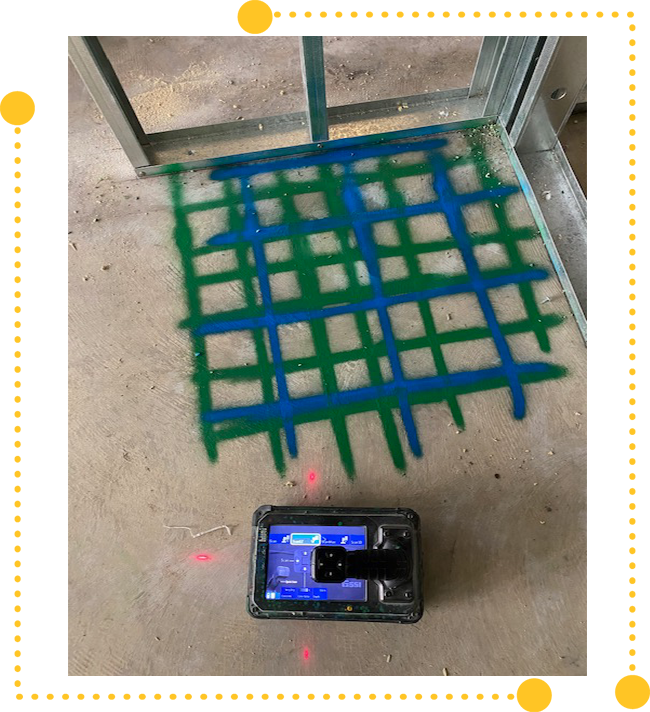Why Pick RainierGPR Concrete Scanning for Accurate Subsurface Evaluation
Why Pick RainierGPR Concrete Scanning for Accurate Subsurface Evaluation
Blog Article
Discovering the Key Benefits of Concrete Scanning in Building Projects
In the world of contemporary building techniques, the usage of concrete scanning technology has become a crucial tool for ensuring job performance and architectural integrity. From enhancing precaution to accurately finding utilities concealed under the surface area, the benefits of concrete scanning are diverse. The capability to improve task timelines and minimize expenses while preserving existing frameworks is a testimony to the value this innovation gives the construction industry. As we delve right into the nuanced benefits of concrete scanning, it comes to be evident that its effect expands much past surface-level evaluations, using a glimpse into the detailed internet of benefits waiting to be uncovered.
Enhanced Safety And Security Measures
Using advanced concrete scanning modern technology enhances precaution on building and construction websites by offering precise discovery of possible dangers hidden beneath the surface. This technology enables building and construction teams to identify rebar, conduits, post-tension cords, and various other obstructions prior to excavation or drilling, dramatically decreasing the threat of mishaps. By determining these components specifically, workers can avoid destructive essential architectural parts, hence stopping injuries, delays, and costly repair work.
Moreover, concrete scanning plays a vital role in guaranteeing the integrity of existing structures throughout restorations or expansions. By identifying weaknesses, gaps, or wear and tear within concrete components, designers can attend to these issues proactively, improving the total safety and durability of the structure. This proactive technique not just reduces the threat of architectural failings however also decreases the possibility for crashes created by unpredicted structural deficiencies.
Basically, the implementation of concrete scanning modern technology functions as an aggressive security procedure that safeguards both building and construction employees and the architectural integrity of structures, inevitably adding to the overall success and efficiency of building projects. - RainierGPR Concrete Scanning
Accurate Discovery of Energies
Concrete scanning modern technology helps with specific identification of underground utilities, boosting construction website security and effectiveness. Accurate detection of utilities is critical in building projects to stop expensive problems, job delays, and most significantly, make sure the safety and security of workers and the general public. By making use of advanced scanning technologies such as ground-penetrating radar (GPR) and electro-magnetic induction, building and construction teams can draw up the area of hidden pipelines, cable televisions, and other energies with high degrees of accuracy.

Time and Cost Performance

Concrete scanning technology allows building and construction groups to precisely locate rebar, post-tension cables, and other embedded items within concrete frameworks. This precise details aids in avoiding expensive errors such as accidental damage to vital components Website throughout drilling, cutting, or coring activities. Furthermore, by determining possible threats beforehand, the requirement for expensive fixings or remodel as a result of problems can be lessened, leading to cost savings for the job.

In addition, the capability to promptly and properly detect energies beneath the surface without triggering any damage not just conserves time yet also avoids costly interruptions to existing facilities. Generally, the moment and expense performance benefits of concrete scanning make it an important device for improving construction job administration and implementation.
Conservation of Architectural Honesty
Maintaining the structural integrity of pop over to this site structures and facilities is extremely important in ensuring long-term stability and safety. Concrete scanning plays a critical role in this preservation procedure by permitting building professionals to identify potential risks to the architectural honesty of a structure or framework prior to they rise right into major concerns. With making use of advanced scanning technologies such as ground-penetrating radar (GPR) and electro-magnetic induction, building groups can non-invasively examine the condition of concrete structures, find rebar, post-tension wires, and various other embedded elements, and recognize any kind of spaces, splits, or deterioration within the concrete.
Improved Project Planning
In order to ensure the effective implementation of building and construction projects, meticulous focus to information and extensive planning are necessary components that stem from a detailed understanding of the architectural conditions determined through concrete scanning. Ultimately, integrating concrete scanning right into the project preparation stage boosts sychronisation amongst group members, cultivates proactive analytical, and adds to the effective delivery of building and construction tasks within budget plan and routine constraints.
Conclusion
To conclude, concrete scanning supplies countless benefits in construction tasks. By boosting precaution, accurately identifying energies, enhancing time and expense performance, preserving structural integrity, and helping in task planning, concrete scanning verifies to be a vital tool for successful project implementation. Its capability to mitigate risks, boost performance, and ensure project stability makes it a crucial property for construction professionals.
In the world of modern building and construction methods, the use of concrete scanning technology has emerged as a pivotal device for making sure project effectiveness and structural integrity.Concrete scanning modern technology makes it possible for construction teams to properly situate rebar, post-tension cable televisions, and various other embedded things within concrete frameworks. Through the usage of sophisticated scanning innovations such as ground-penetrating radar (GPR) and electro-magnetic induction, building and construction groups can non-invasively assess the problem of concrete structures, locate rebar, post-tension cables, and various other embedded elements, and identify any type of voids, splits, or wear and tear informative post within the concrete.
In order to make certain the successful execution of construction tasks, meticulous attention to information and complete preparation are crucial components that stem from a thorough understanding of the architectural conditions recognized via concrete scanning. Eventually, including concrete scanning right into the project preparation phase improves sychronisation among group participants, fosters proactive problem-solving, and contributes to the effective distribution of building projects within budget plan and routine constraints.
Report this page